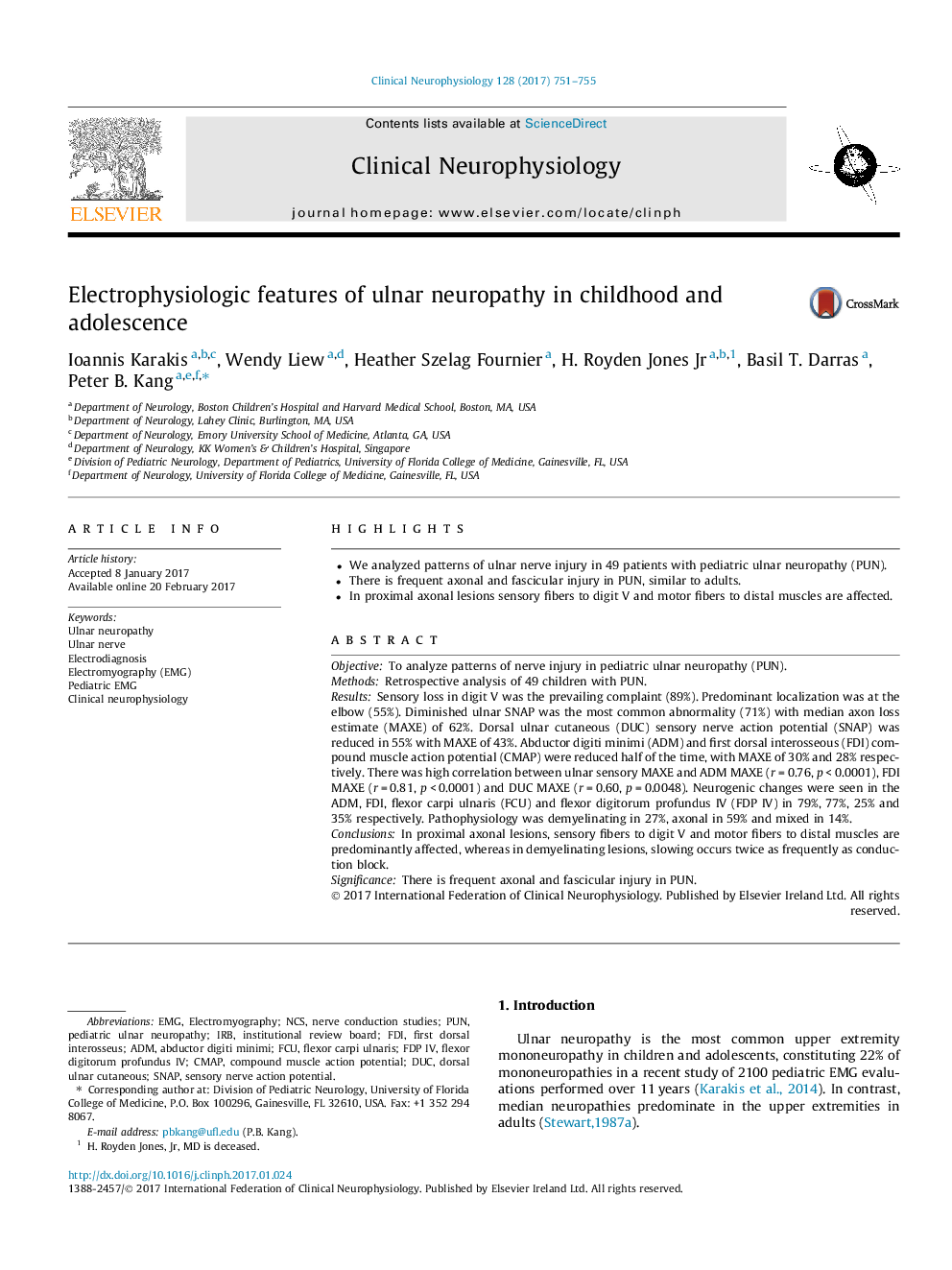| Article ID | Journal | Published Year | Pages | File Type |
|---|---|---|---|---|
| 5627674 | Clinical Neurophysiology | 2017 | 5 Pages |
â¢We analyzed patterns of ulnar nerve injury in 49 patients with pediatric ulnar neuropathy (PUN).â¢There is frequent axonal and fascicular injury in PUN, similar to adults.â¢In proximal axonal lesions sensory fibers to digit V and motor fibers to distal muscles are affected.
ObjectiveTo analyze patterns of nerve injury in pediatric ulnar neuropathy (PUN).MethodsRetrospective analysis of 49 children with PUN.ResultsSensory loss in digit V was the prevailing complaint (89%). Predominant localization was at the elbow (55%). Diminished ulnar SNAP was the most common abnormality (71%) with median axon loss estimate (MAXE) of 62%. Dorsal ulnar cutaneous (DUC) sensory nerve action potential (SNAP) was reduced in 55% with MAXE of 43%. Abductor digiti minimi (ADM) and first dorsal interosseous (FDI) compound muscle action potential (CMAP) were reduced half of the time, with MAXE of 30% and 28% respectively. There was high correlation between ulnar sensory MAXE and ADM MAXE (r = 0.76, p < 0.0001), FDI MAXE (r = 0.81, p < 0.0001) and DUC MAXE (r = 0.60, p = 0.0048). Neurogenic changes were seen in the ADM, FDI, flexor carpi ulnaris (FCU) and flexor digitorum profundus IV (FDP IV) in 79%, 77%, 25% and 35% respectively. Pathophysiology was demyelinating in 27%, axonal in 59% and mixed in 14%.ConclusionsIn proximal axonal lesions, sensory fibers to digit V and motor fibers to distal muscles are predominantly affected, whereas in demyelinating lesions, slowing occurs twice as frequently as conduction block.SignificanceThere is frequent axonal and fascicular injury in PUN.
